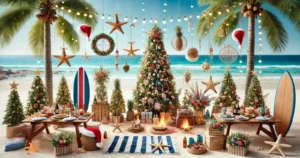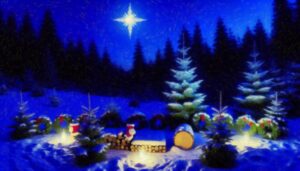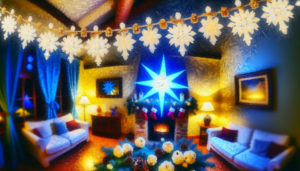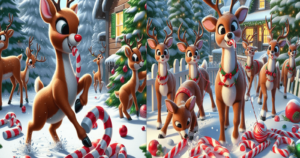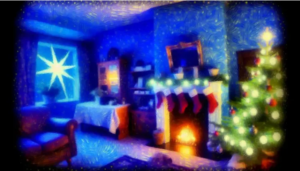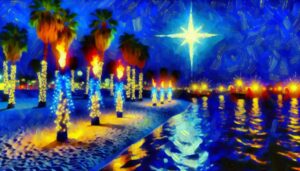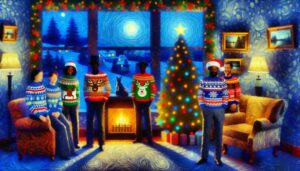Halloween and Christmas are two widely celebrated holidays with distinct themes, traditions, and cultural significance. Halloween is associated with themes of spookiness, the supernatural, and sometimes a touch of the macabre.
It’s a time when people enjoy a bit of scare in a fun and safe way. On the other hand, Christmas is all about warmth, love, peace, and joy. It’s a time for families to come together, exchange gifts, and express gratitude and goodwill towards one another. The atmospheres and feelings associated with these holidays are indeed quite distinct.
| Halloween | Christmas |
|---|---|
| October 31 | December 25 |
| Celtic festival of Samhain, All Hallows’ Eve | Birth of Jesus Christ, combining various winter solstice traditions |
| Pumpkins, ghosts, witches, skeletons, black cats | Christmas tree, Santa Claus, reindeer, nativity scenes |
| Trick-or-treating, costume parties, haunted houses | Gift-giving, decorating trees, Christmas caroling, family feasts |
| Jack-o’-lanterns, cobwebs, spooky lights | Lights, ornaments, wreaths, stockings |
| Candy, caramel apples, pumpkin pie | Christmas cookies, roast turkey or ham, eggnog, fruitcake |
| Celebrate the supernatural, honor the dead, and have fun with fright | Celebrate the birth of Jesus Christ, promote joy, peace, and goodwill |
| Orange and black | Red, green, gold, white |
| Witches, ghosts, goblins | Santa Claus, Jesus Christ, elves |
| Secularized with focus on costumes and parties | Combination of religious and secular traditions |
Meaning and Origin of Halloween
Means contraction of All Hallows’ Eve, a holiday observed on October 31, the evening before All Saints’ (or All Hallows’) Day. The celebration marks the day before the Western Christian feast of All Saints and initiates the season of Allhallowtide , which lasts three days and concludes with All Souls’ Day.
All Souls’ Day, celebrated on November 2, was added later to honor the dead. Traditions from these Christian holidays, such as parades, dressing in costumes, and lighting bonfires, merged with Samhain customs.
Halloween, observed on October 31st, has its roots in ancient Celtic traditions, particularly the festival of Samhain (Samhain is a pagan religious festival originating from an ancient Celtic spiritual tradition)celebrated over 2,000 years ago in what is now Ireland, the United Kingdom, and northern France. Which marked the end of the harvest season and the beginning of winter.
The Celts believed that on the night of October 31, the boundary between the worlds of the living and the dead became blurred, allowing spirits to return to earth. To ward off these spirits, they lit bonfires and wore costumes made of animal heads and skins.
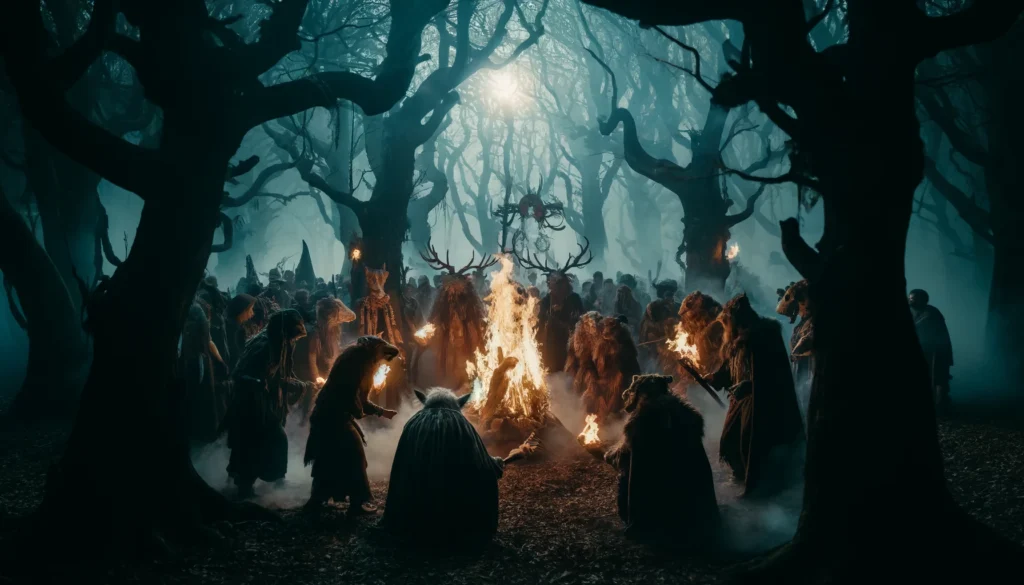
Over time, Halloween evolved into a holiday characterized by costumes, spooky decorations, and activities like trick-or-treating, haunted houses, and parties. It has a playful and somewhat eerie atmosphere, often associated with ghosts, witches, vampires, and other supernatural creatures.
Samhain, also known as the origin of Halloween, was a powerful and special demon of Hell and was one of the 66 Seals. He could only rise when summoned by two powerful witches through three blood sacrifices over three days, with the last sacrifice day on the final harvest, Halloween.

It was believed that on that day, the souls of the dead returned to their homes, so people dressed in costumes and lit bonfires to ward off spirits. In this way, popular Halloween tropes such as witches, ghosts, and goblins became associated with the holiday.
Immigrants from Europe, particularly the Irish, brought Halloween traditions to North America in the 19th century. Over time, Halloween evolved into a community-centered holiday with activities like trick-or-treating, carving jack-o’-lanterns, festive gatherings, and donning costumes. Today, Halloween is celebrated in many parts of the world, blending ancient customs with modern festivities.
Halloween vs Christmas celebration
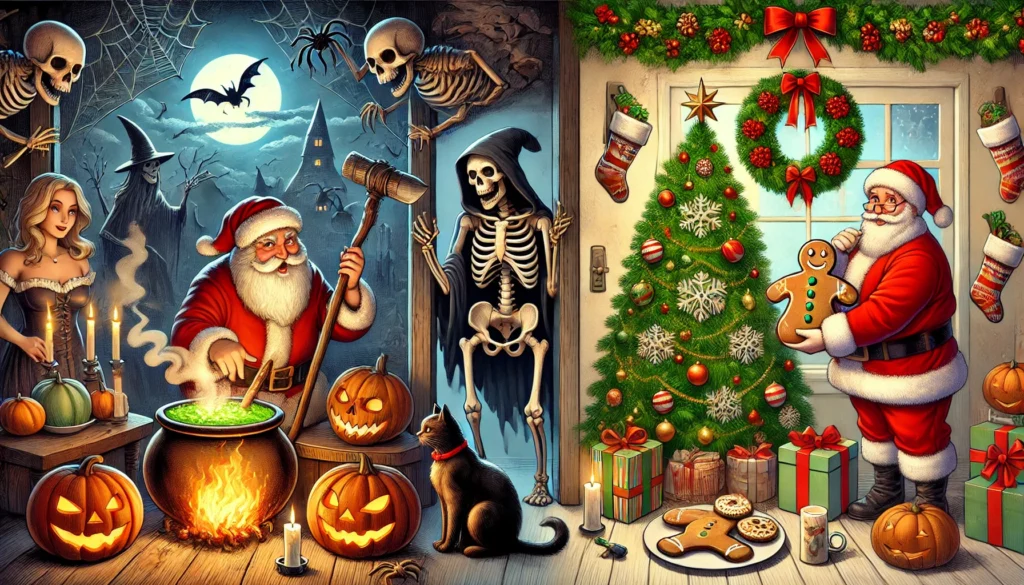
Halloween celebrations
United States: Trick-or-treating, costume parties, and haunted attractions are widespread.
Ireland and Scotland: Traditional activities include bonfires and games such as apple bobbing.
Mexico: Celebrations blend with the Day of the Dead (Día de los Muertos), a time to honor deceased loved ones with altars and offerings.
Japan: Halloween has grown in popularity, especially in urban areas where costume parties and parades are common.
Christmas Celebration
United States: Christmas trees, stockings, and Santa Claus are central. Celebrations include decorating, gift exchanges, and festive meals.
United Kingdom: Traditions include Christmas crackers, mince pies, and the Queen’s Christmas message.
Germany: Christmas markets (Weihnachtsmärkte), Advent calendars, and St. Nicholas Day on December 6th.
Australia: Celebrated during summer, often with beach outings and barbecues.
Philippines: One of the longest Christmas seasons, starting in September and featuring parades, fireworks, and the Simbang Gabi (night mass).
Solomon Islands: Blending traditional customs with Christian practices, featuring community feasts, church services, and festive activities.

7 famous Halloween decorations
- JACK ‘O’ LANTER -The story behind the Jack ‘O’ lantern is the Devil was upset by the trick Jack had played on him and keeping his word not to claim his soul, would not allow Jack into hell. He sent Jack off into the dark night with only a burning coal to light his way. Jack put the coal into a carved-out turnip and has been roaming the Earth with it ever since. In Ireland, people started to carve demonic faces out of turnips to frighten away Jack’s wandering soul. When Irish immigrants moved to the U.S., they began carving jack-o’-lanterns from pumpkins, as these were native to the region.

2. Haunted houses, with their eerie decor and spooky effects, are a popular Halloween attraction.
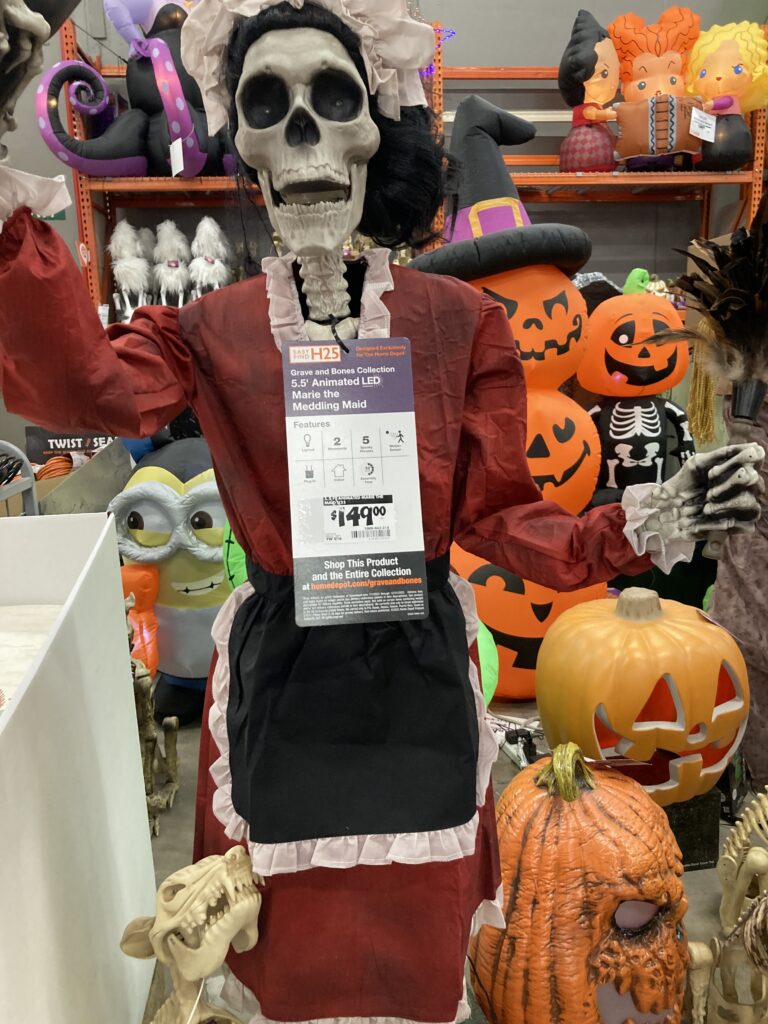
3. Creepy cobwebs, plastic spiders, and bats add an eerie touch to Halloween decor.

4. Glowing skeletons
5. Ghostly figures are often used to create a haunting ambiance for Halloween parties.”
6. Gravestones and tombstones are commonly seen in Halloween displays, adding to the spooky atmosphere.”
7. Witches’ cauldrons, broomsticks, and potion bottles are whimsical yet eerie decorations for Halloween.
8. Vampires have long been a quintessential element of Halloween lore, embodying the eerie, mysterious, and slightly chilling aspects of the holiday. Their presence evokes a sense of both fear and fascination, making them perfect for Halloween décor and celebrations.
In Vampire folklore Garlic has a long-standing reputation as a ward against vampires and evil spirits in folklore and mythology, particularly in European traditions. It was believed that garlic’s strong odor could repel vampires and protect against their attacks.
On Halloween night kids as well as adult roam around neighborhoods from house to house dressed in almost any costume they can create and TRICK OR TREAT. Neighbors would fill their candy bags and buckets with all kinds of goodies. Over the years Halloween has become commercialized.
Christmas December 25th
Christmas, celebrated on December 25th, has Christian origins and commemorates the birth of Jesus Christ. It has been widely adopted around the world and has both religious and secular significance. Traditionally, it involves festive decorations, gift-giving, feasting, and spending time with loved ones. Iconic symbols include the nativity scene, Santa Claus, reindeer, and the Christmas tree. The holiday is marked by a sense of warmth, generosity, and the spirit of giving.
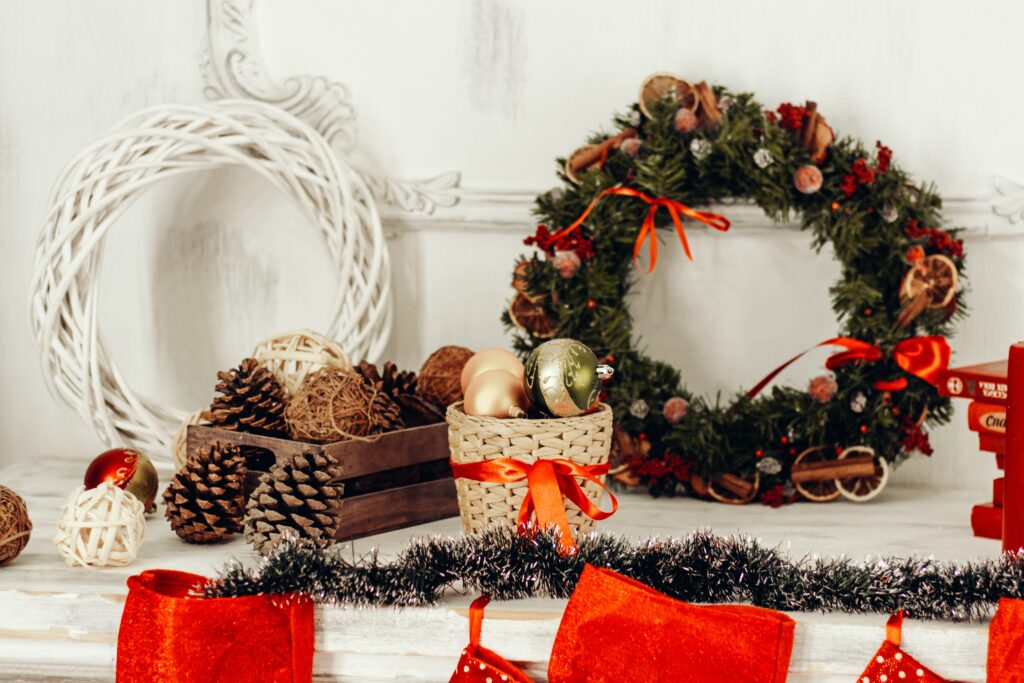
Religious Significance of Christmas world wide
Christmas is a Christian holiday celebrating the birth of Jesus Christ. It commemorates the Nativity of Jesus and is a significant event in Christian theology. Christmas, observed on December 25th, holds significance as both a sacred religious observance and a globally embraced cultural and commercial event.
This tradition spans two millennia, uniting people worldwide in practices that blend religious reverence with secular festivities. For Christians, Christmas Day commemorates the birth of Jesus of Nazareth, a pivotal figure whose teachings underpin their faith. Time-honored customs encompass gift-giving, adorning Christmas trees, partaking in church services, gathering for festive meals with loved ones, and eagerly anticipating the arrival of Santa Claus. In the United States, December 25—Christmas Day—stands as an official federal holiday.
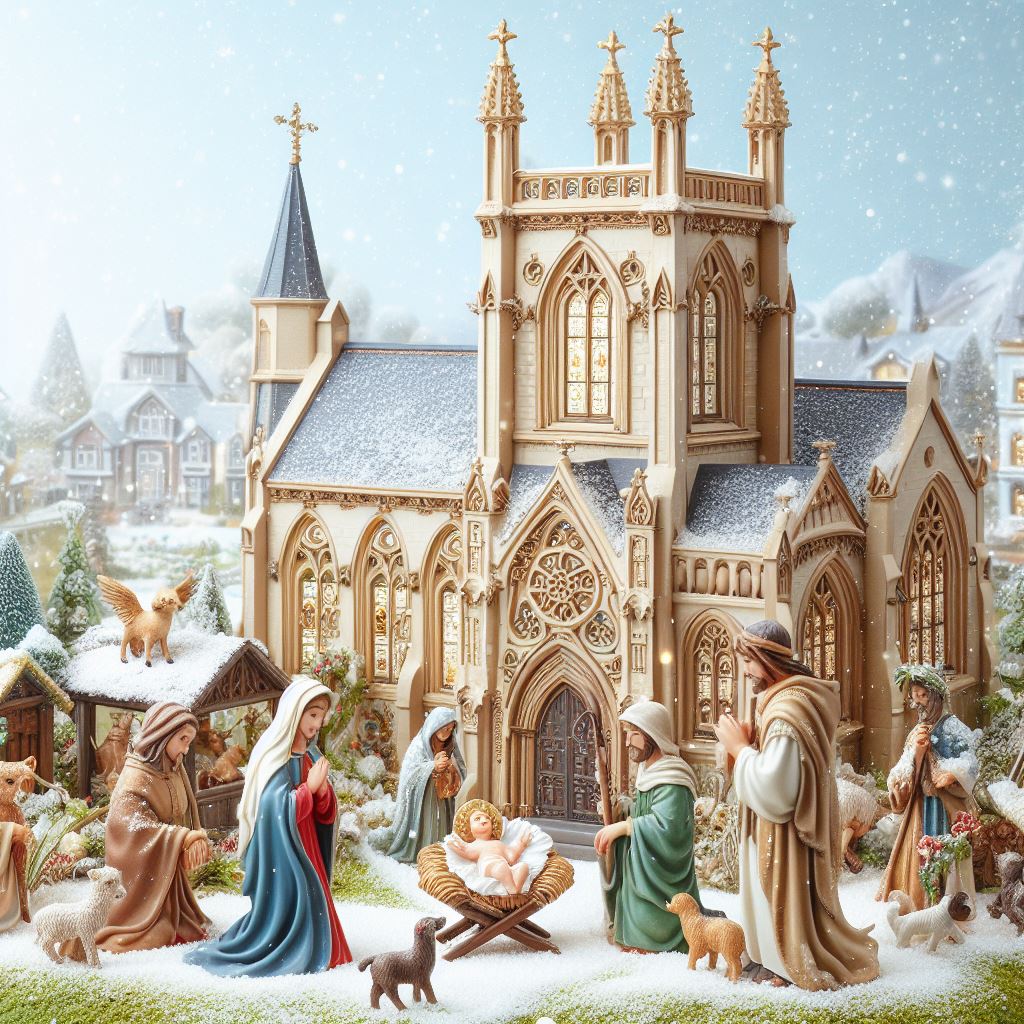
- Decorations: People decorate their homes, streets, and public places with lights, ornaments, wreaths, and Christmas trees. These decorations create a festive atmosphere.
Key role of the Christmas Tree during Christmas season
- Christmas Tree: The Christmas tree is a central symbol of the holiday. It is often adorned with lights, ornaments, and a tree topper. Families may also exchange gifts under the tree. A Christmas tree, typically an evergreen conifer like spruce, pine, or fir, or an artificial tree resembling one, is a adorned tree associated with the observance of Christmas. Traditionally, it would be adorned with items like paper roses, apples, wafers, tinsel, and sweets.
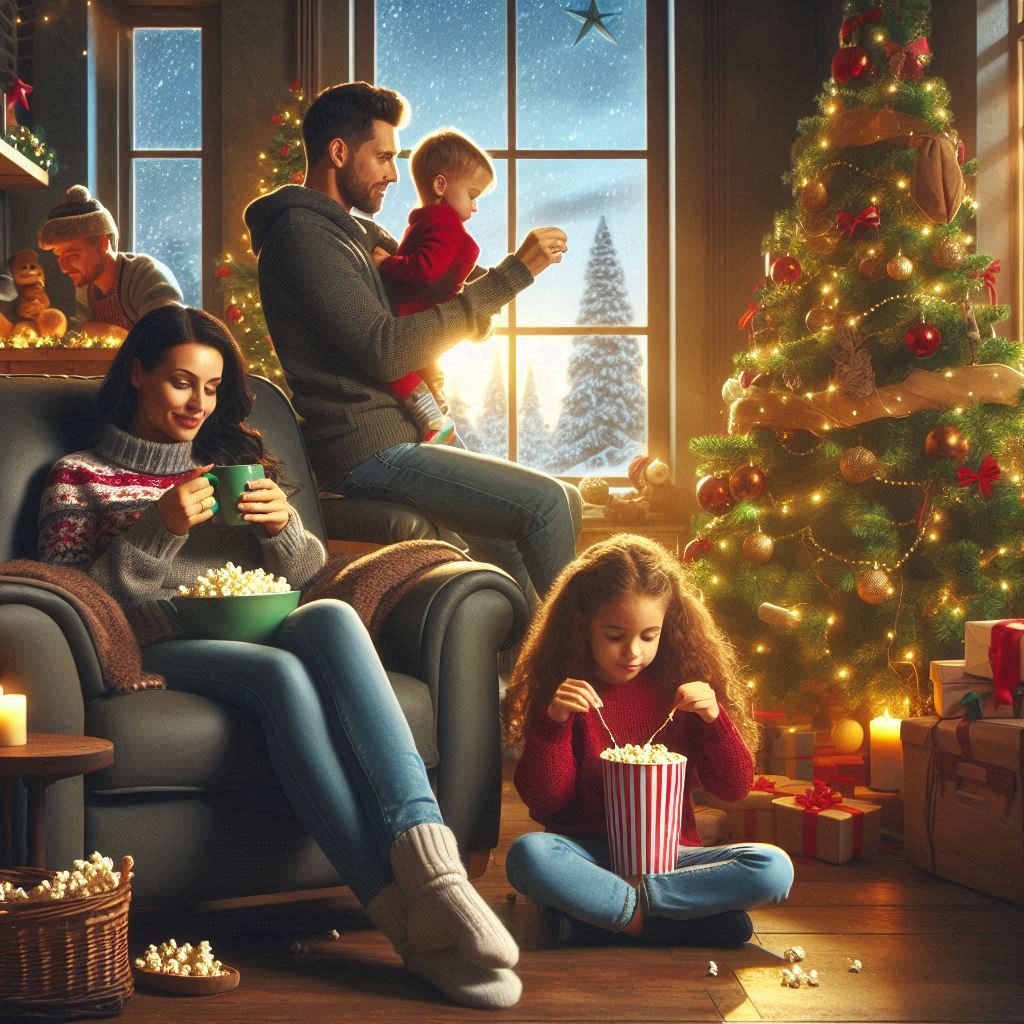
- Moravian Christians were among the first to use candles for illumination, later replaced by electric lights. Nowadays, there’s a wide array of traditional and contemporary decorations like garlands, ornaments, tinsel, and candy canes. At the tree’s apex, one might find an angel or star symbolizing the Angel Gabriel or the Star of Bethlehem from the Nativity.
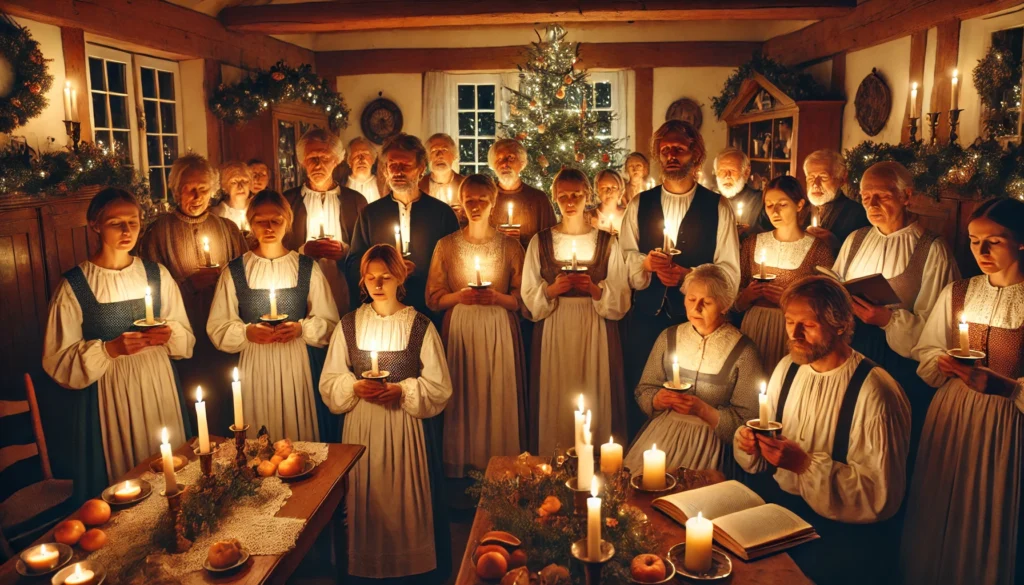
- Edibles such as gingerbread, chocolate, and other treats are also popular, often tied or hung from the tree’s branches with ribbons. The Christmas tree was historically associated with Lutheran Churches, and it wasn’t until 1982 that the Catholic Church introduced the Vatican Christmas Tree. In Western Christian tradition, Christmas trees are set up on various days, ranging from the first day of Advent to even Christmas Eve, depending on the country.
- According to customs within the same faith, the typical days for taking down Christmas decorations, including the tree, are Twelfth Night or, if they’re not removed by then, Candlemas, which marks the end of the Christmas-Epiphany season in certain denominations. The Christmas tree is occasionally likened to the “Yule-tree,” especially in discussions about its folkloric roots.

Christmas Tree
12 Exciting and cheerful activities done during Christmas Holidays
- Gift Giving: Exchanging gifts is a widespread tradition during Christmas. It symbolizes the gifts given to us by the birth of Jesus. Many families and friends exchange presents to express love and appreciation.
- Family and Friends Gathering: Christmas is a time for families and friends to come together. Many people travel long distances to be with their loved ones.
- Feasting: Special meals are prepared for Christmas, which may include roast turkey, ham, or other traditional dishes. Different cultures have their own unique Christmas culinary traditions.
- Caroling: Carolers sing Christmas carols, which are songs specifically associated with the holiday. This is a joyful tradition that often involves going door-to-door.
- Midnight Mass or Church Services: Many Christians attend a church service, such as Midnight Mass, on Christmas Eve or on Christmas morning to celebrate the birth of Jesus.
- Advent Calendar: Some Christians use an Advent calendar to count down the days until Christmas. Each day, a door is opened to reveal a small gift or a piece of chocolate.
- Nativity Scenes: These are displays that depict the birth of Jesus. They often include figurines of Mary, Joseph, the baby Jesus, shepherds, and the Three Wise Men.
- Santa Claus and Stockings: In many cultures, children hang stockings by the fireplace for Santa Claus to fill with gifts. Santa Claus is a jolly figure who is believed to bring gifts to children on Christmas Eve.
- Holiday Lights and Displays: Many neighborhoods and cities put up elaborate light displays, creating a festive and cheerful atmosphere.
- Acts of Charity and Kindness: Christmas is a time for giving back to the community. Many people engage in acts of charity, such as volunteering or donating to those in need.
- Holiday Movies and Stories: Watching Christmas-themed movies and reading stories is a popular tradition, helping to create a sense of warmth and nostalgia.
- Reflection and Gratitude: Some people use this time to reflect on the past year and express gratitude for their blessings.
Remember that the way Christmas is celebrated can vary greatly depending on cultural, religious, and regional differences. These aspects may not apply universally, but they represent common elements of Christmas celebrations in many parts of the world.
Christmas cakes enjoyed around the world. Here are some popular ones:
- Fruitcake: This is perhaps the most classic Christmas cake. It’s made with candied or dried fruits, nuts, and spices. It’s often soaked in alcohol like brandy or rum for added flavor.

CHRISTMAS CAKE
2. Yule Log Cake (Bûche de Noël): A French-inspired Christmas dessert that’s shaped like a log. It’s typically made of sponge cake rolled with buttercream frosting and decorated to look like a log.
3. Panettone: An Italian Christmas bread-like cake that’s studded with candied fruits and raisins. It’s often enjoyed with a glass of wine or a warm beverage.
4. Stollen: A German fruitcake made with dried fruits, nuts, and spices. It’s typically covered with powdered sugar and is a popular treat during the holiday season.
5. Gingerbread Cake: This spiced cake is often associated with Christmas and is made with ginger, cinnamon, cloves, and molasses. It can be served in various forms including loaf cakes, bundt cakes, or layer cakes.
6. Fir Tree Cake (Tannenbaum): A traditional German cake shaped like a Christmas tree. It’s often made with layers of sponge cake and filled with cream or fruit.
7. King Cake: While more associated with Mardi Gras, in some cultures, this sweet, ring-shaped cake is also enjoyed during the Christmas season. It’s often decorated with colored icing and sometimes contains a hidden trinket.
8. Kransekake: A Norwegian and Danish cake made of stacked rings of almond-flavored pastry. It’s often served on special occasions including Christmas.
9. Pandoro: Another Italian Christmas cake, similar to panettone but without the candied fruits. It’s typically dusted with powdered sugar to resemble a snowy mountain.

10. Black Forest Cake (Schwarzwälder Kirschtorte): Though not exclusively a Christmas cake, it’s popular during the holiday season. This German dessert consists of layers of chocolate sponge cake, cherries, and whipped cream.
11. Caribbean Black Cake also known as Caribbean Rum Fruit cake
Remember, the availability and popularity of these cakes can vary by region and personal preference.
Halloween vs Christmas differences
- Themes and Atmosphere:
- Halloween: Mysterious, spooky, and sometimes a little eerie.
- Christmas: Warm, joyful, and often associated with feelings of love, hope, and giving.
- Origins and Religious Significance:
- Halloween: Has pagan roots, although it’s been integrated into Christian traditions as All Hallows’ Eve.
- Christmas: Primarily a Christian holiday commemorating the birth of Jesus Christ.
- Symbols and Decorations:
- Halloween: Pumpkins, ghosts, witches, skeletons, spiders, and haunted imagery.
- Christmas: Nativity scenes, Santa Claus, Christmas trees, ornaments, and lights.
- Activities and Traditions:
- Halloween: Trick-or-treating, costume parties, haunted houses, and telling spooky stories.
- Christmas: Gift exchanges, caroling, attending religious services, decorating trees, and feasting.
- Cultural Impact:
- Halloween: Celebrated in various forms around the world, with a focus on costumes and candy.
- Christmas: Widely celebrated globally, with religious and secular observance, and a strong emphasis on family and community.
- Timing:
- Halloween: October 31st.
- Christmas: December 25th.
- Colors: Christmas colors are typically red, green, and white. Red symbolizes warmth, love, and the festive spirit. Green represents evergreen plants, renewal, and the hope of spring. White signifies purity and the winter snow . Halloween colors, on the other hand, are orange and black. Orange is associated with autumn harvest, pumpkins, and a festive, lively atmosphere. Black represents darkness, mystery, and the supernatural elements often associated with Halloween.
Halloween and Christmas are two distinct holidays with their own unique traditions and atmospheres. Halloween leans towards the mysterious and spooky, while Christmas embraces warmth, generosity, and the celebration of the birth of Jesus Christ. Both holidays hold significant cultural importance and are cherished by people around the world.
Halloween and Christmas are celebrated in various countries around the world, although the extent and manner of celebration can vary based on cultural, religious, and regional factors. Here are some countries where both holidays are observed:
Countries Halloween is celebrated in
Halloween is primarily celebrated in:
- United States: Halloween is widely celebrated with elaborate decorations, costume parties, and trick-or-treating.
- Canada: Similar to the United States, Halloween is a popular holiday with extensive festivities.
- United Kingdom: Halloween celebrations have become more widespread in recent years, with children going trick-or-treating and adults hosting parties.
- Ireland: Halloween has Celtic roots in Ireland, and it’s celebrated with various traditions.
- Australia: While not as widely celebrated as in some other countries, Halloween is gaining popularity, especially in urban areas.
- Mexico: Dia de los Muertos (Day of the Dead) is celebrated around the same time as Halloween, with a focus on honoring deceased loved ones.
- Philippines: Halloween is becoming increasingly popular, with children going trick-or-treating and parties being hosted.
- Japan: Halloween is celebrated, particularly in urban areas, with costume parties and events.
- Caribbean: Over the years American culture has indoctrinate this region via television and social media so the younger generation are moving away from their culture of celebrating NOV 1st and NOV. 2nd as all saints and all souls to celebrate October 31st Halloween.
Christmas is celebrated globally, but some countries have particularly noteworthy traditions:
- United States: Christmas is widely celebrated with decorations, gift-giving, and various festivities.
- United Kingdom: Christmas is a major holiday with traditions like caroling, Christmas crackers, and festive meals.
- Canada: Similar to the United States, Christmas is a significant holiday with a wide range of traditions.
- Germany: Known for its traditional Christmas markets, Germany has many unique customs associated with the holiday.
- Italy: Christmas is celebrated with elaborate nativity scenes and festive meals.
- France: French Christmas celebrations often involve a festive meal on Christmas Eve, known as “Réveillon.”
- Mexico: Christmas is celebrated with a range of festivities, including posadas (processions) and the nochebuena (Christmas Eve) meal.
- Russia: Orthodox Christmas is celebrated on January 7th, with unique customs and traditions.
- Sweden: Celebrations often include the Feast of St. Lucia on December 13th, and the Yule Goat is a popular symbol.
- Japan: While Christmas is not a national holiday, it’s celebrated with decorations, lights, and gift-giving, though it’s more of a romantic holiday than a family one.
- Caribbean: Some Caribbean islands has very unique ways of celebrating Christmas. For Instance in Saint Vincent & The Grenadines there is a celebration before Christmas call nine mornings. This is where the nine mornings before Christmas the local gather from 4am downtown Kingstown ,to enjoy Christmas caroling and other Christmas related events.
These lists are not exhaustive, and both Halloween and Christmas are celebrated in many other countries, often with unique cultural twists and variations.
Common Questions people ask and Answers
- What are the origins of Halloween and Christmas?
- Halloween: Halloween has its roots in the ancient Celtic festival of Samhain, where people lit bonfires and wore costumes to ward off ghosts. It evolved over time, influenced by Christian and Roman traditions.
- Christmas: Christmas celebrates the birth of Jesus Christ and has origins in Christian traditions. It incorporates elements from pagan winter festivals, such as the Roman Saturnalia and Yule.
- How are Halloween and Christmas celebrated?
- Halloween: Celebrations include dressing up in costumes, trick-or-treating, carving pumpkins into jack-o’-lanterns, and attending parties or haunted houses.
- Christmas: Celebrations involve decorating Christmas trees, exchanging gifts, attending church services, singing carols, and enjoying festive meals with family and friends.
- What are typical Halloween and Christmas decorations?
- Halloween: Common decorations include jack-o’-lanterns, skeletons, ghosts, cobwebs, witches, and tombstones.
- Christmas: Decorations often feature Christmas trees, lights, wreaths, stockings, nativity scenes, and ornaments.
- What foods are associated with Halloween and Christmas?
- Halloween: Popular treats include candy, caramel apples, popcorn balls, and pumpkin-flavored desserts.
- Christmas: Traditional foods include roast turkey or ham, stuffing, cranberry sauce, Christmas pudding, gingerbread, and eggnog.
- How do people dress up for Halloween and Christmas?
- Halloween: People wear costumes ranging from scary (ghosts, witches) to fun (superheroes, celebrities).
- Christmas: Common attire includes festive sweaters, Santa Claus outfits, elf costumes, and formal wear for holiday parties.
- What are some popular Halloween and Christmas movies?
- Halloween: Favorites include “Hocus Pocus,” “Halloween,” “The Nightmare Before Christmas,” and “Beetlejuice.”
- Christmas: Classics include “Home Alone,” “It’s a Wonderful Life,” “A Christmas Carol,” “Elf,” and “The Polar Express.”
- Why do people carve pumpkins for Halloween?
- Carving pumpkins, or making jack-o’-lanterns, originated from an Irish myth about Stingy Jack. People carved turnips initially, but when Irish immigrants arrived in America, they found pumpkins more suitable.
- What is the significance of the Christmas tree?
- The Christmas tree tradition started in Germany in the 16th century. It symbolizes life and light during the dark winter months, and for Christians, it represents the eternal life of Jesus Christ.
- Are Halloween and Christmas public holidays?
- Halloween: Not typically a public holiday, but widely celebrated.
- Christmas: Generally a public holiday in many countries, with businesses and schools closed.
- How do different cultures celebrate Halloween and Christmas?
- Halloween: Primarily celebrated in the United States, Canada, and the United Kingdom, with increasing popularity worldwide.
- Christmas: Celebrated globally, with unique traditions in various countries, such as La Befana in Italy, St. Nicholas Day in Germany, and Three Kings’ Day in Spain.
Resources
https://en.wikipedia.org/wiki/Christmas_tree#Customs_and_traditions
https://www.britannica.com/topic/Halloween
https://www.caribbean.co.uk/blog/show/nine-mornings-festival-in-st-vincent-the-grenadines
https://abavistwinterchristmas.com/christmas-vs-thanks-giving/

